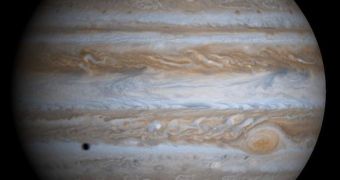A group of astronomers in the United Kingdom proposes that the errors experts discovered to exist in the “gold standard” of the Universe may in fact be a lot larger than previously calculated. This standard is set by results obtained with the WMAP satellite.
The spacecraft spent years analyzing the Cosmic Microwave Background (CMB), which is the relic radiation left over after the Big Bang exploded everything into being.
Durham University expert astronomers Utane Sawangwit and Tom Shanks says that the WMAP results include data on the exponential expansion process the Cosmos has been undergoing since its first day. The process is called inflation, and it explains why the Universe is expanding increasingly fast.
The surveys the satellite conducted also covers the existence of dark matter and dark energy. In fact, it's WMAP datasets that let astrophysicists establish that the Cosmos is made up of 4 percent regular matter, 22 percent dark matter, and 74 percent dark energy.
The purpose of the NASA Wilkinson Microwave Anisotropy Probe mission is to scan the CMB in search of variations in the background temperature this photon layer has. This is an all-sky survey.
Experts base their current view of the Universe on the patterns of temperature ripples that WMAP saw in the CMB during its surveys. Most of these ripples occupy about 1 degree in the sky, which is the rough equivalent of twice the area covered by the full Moon.
Scientific models that are designed to explain how the Universe is set up without using dark energy or dark matter propose the existence of small, narrower temperature variations in the CMB, which the satellite did not see in the actual studies.
What the Durham team did was test to see how much the WMAP survey smooths the CMB ripples. In order to do that, they had to look at a lot of point-like radio sources throughout the Universe.
They found evidence that “beam smoothing” from the satellite was a lot larger than scientists operating the satellite first calculated. The major implication of this is that models of the Universe that do not require the presence of dark matter or dark energy may be easier to prove.
In other words, it could be that the existence of dark energy is not as bullet-proof as originally thought, Daily Galaxy reports.
But the team that operates the satellite is happy to defend its science results. “We're happy to defend WMAP,” explains team member Gary Hinshaw, who is based at the NASA Goddard Space Flight Center (GSFC), in Greenbelt, Maryland.

 14 DAY TRIAL //
14 DAY TRIAL //